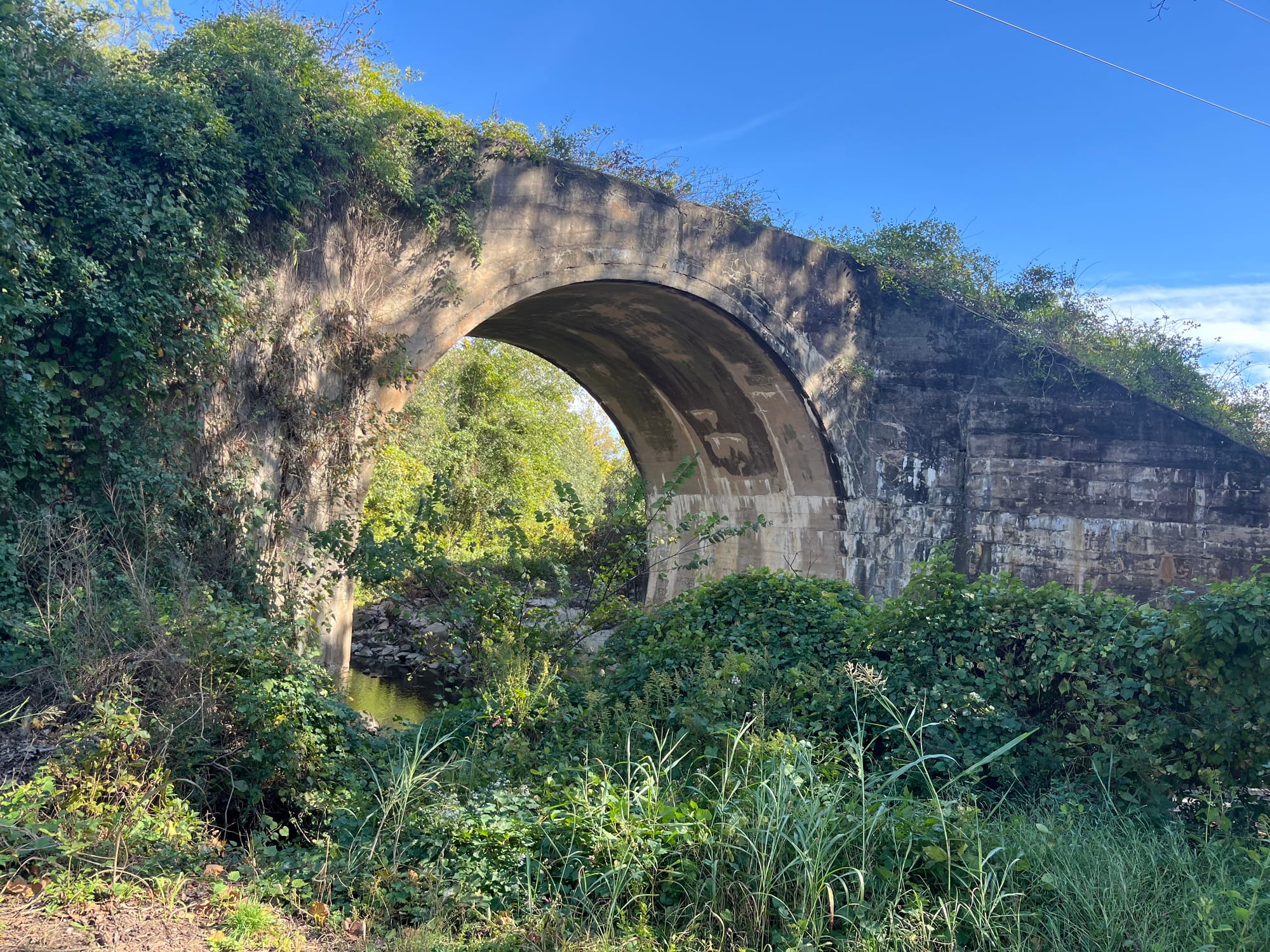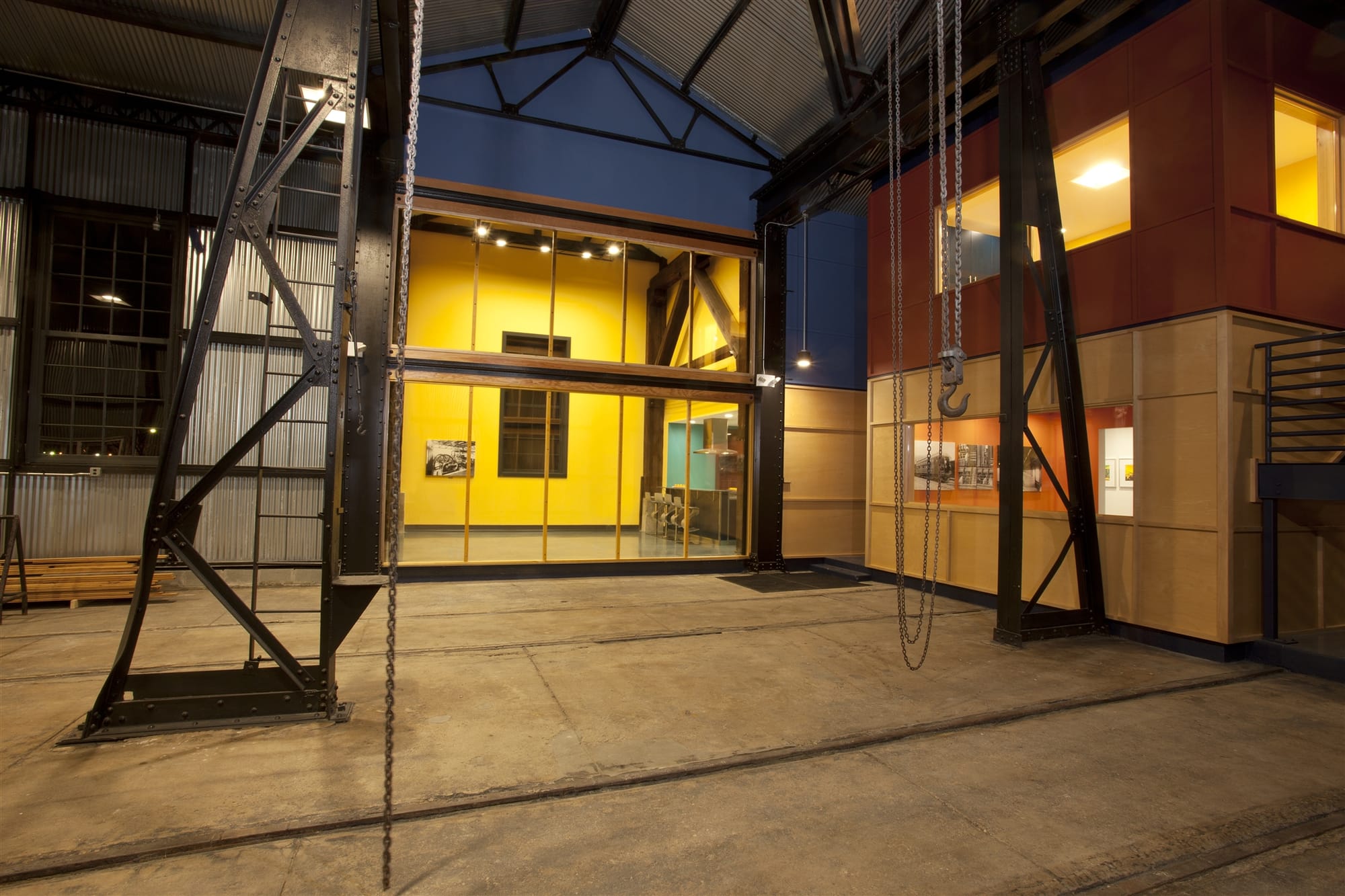Richmond history: Before the Fall Line Trail, there was the Ashland Electric Railway

Local hikers eager to walk the length of the Ashland-to-Petersburg Fall Line Trail upon its completion several years from now may be intrigued to know that a sizable part of the path will run alongside a long-vanished trolley railway, one that used to carry passengers from Broad Street up to downtown Ashland every hour.
Richmond is well-known for having rolled out the world’s first practical electric streetcar system in the late 1880s. Designed by Frank Sprague, the system would grow to over 80 of miles of tracks within the local region before cars and buses forced its retirement in 1949.
At their beginning, streetcars promised—and largely delivered—a sort of revolutionary ease of conveyance, offering pedestrians rapid carriage at a time when a horse-drawn tram was about the only form of local mass transit anyone could dream of.
A number of regional electric railways proliferated in Virginia from the late 19th century into the early decades of the 20th century. Among those were the Washington, Arlington and Falls Church Railway Company as well as the Great Falls & Old Dominion Railway, the latter of which notably terminated in Georgetown at the infamous “Exorcist steps” immortalized by the eponymous 1973 movie.
The Richmond-to-Ashland line was part of the same era of regional transport. The Richmond-Ashland Railway Co. actually had its roots in an ambitious project by Frank Jay Gould, a New York-born philanthropist whose portfolio included several French Riviera casinos as well as a small railway holding in Virginia, the Virginia Railway and Power Company, which eventually became the Virginia Electric and Power Company — VEPCO — and which now operates as Dominion.
Gould’s family controlled the famous Wabash Railroad, and the company was looking to break through to the tidewater region east of Richmond. Gould himself purchased the Brook Turnpike—now Brook Road—and chartered the Richmond & Chesapeake Bay Railway Co. in 1905, with ambitious plans to run a major line from Richmond to “points on the Chesapeake Bay” as far as Northumberland County.
At the tail end of several decades of major technological progress, a project like the R&CB could still be daunting. Carlton McKenney, in his regional history “Rails in Richmond,” cites surveyor A.W. Pettigrew who reported that “much of the grading was done by scoop shovels pulled by teams of 16 mules.” The line’s track at one point crossed the considerably more low-powered Lakeside car line — run by the Virginia Passenger & Power Co. — at Brook Road and Laburnum Avenue; engineers designed an ingenious wooden insulator to ensure the two lines did not interfere with each other.
The line also required a major half-mile bridge over what is now the Carver neighborhood, ending in a terminal at Broad and Laurel streets. Originally planned as a wood trestle, Gould opted instead for a concrete viaduct after seeing a similar structure in France. The project was “probably the biggest one on record” at the time, McKenney notes, and “every step” of its construction “was watched and reported in newspapers and trade journals.”

Gould ordered luxury cars from the St. Louis Car Company and the line was ready to run by October of 1907. Plans were made to begin further construction out of Ashland, but the Panic of 1907 led Gould to halt all work. (Blueprints for the eastern lines of the track “collected dust” in a Richmond office for years, McKenney says, and “no one knows what became of them.”)
The full line was never finished; only the Richmond-to-Ashland stretch was ever completed and used. For over a decade the R&BC continued to operate the line. In what must have been a modestly absurd spectacle, the luxuriant St. Louis cars—designed with long travel in mind, with mahogany paneling and frescoed ceilings—were daily run back and forth on the short inter-urban Richmond-Ashland circuit.
Eventually the money-losing line was discontinued in December of 1917 (a rumor circulated that the trains had ceased running in the middle of a route, leaving shoppers stranded with Christmas gifts). Local investors bought the outfit from Gould, with the Richmond-Ashland Railway Co. chartered in April of 1919. The high-class but thoroughly worn-out St. Louis cars were replaced with secondhand trolleys, the power supply was downgraded to 600 volts, and by July the company was running cars to Ashland.
But the line could never make a go of it. In 1921, for instance, it realized a net profit of just $63.29. Fare increases and public ridership campaigns didn’t help. There was an attempt to generate interest in using the line’s tracks for “Auto-Railers,” those early-20th century hybrids of streetcar and passenger bus. Ultimately the company couldn’t overcome its bad financials, which were increasingly worsened by bus and automobile competition. The State Corporation Commission gave the RAR permission to cease traffic in August of 1937.
The line ran for a short while longer before its final car rode the tracks on March 22, 1938. The tracks and wire were sold for scrap. The old R&CB viaduct remained, an anachronistic eyesore that nobody wanted to spend the money to demolish. Its ties were slowly cannibalized for firewood while falling chunks of concrete would regularly rain down on the streets below. It was finally destroyed by wrecking ball in 1965 after then-Mayor Morrill Crowe knocked a ceremonial chip from the structure with a “gilded sledgehammer.”
Most Richmonders may be completely unaware of the old RAR line. Yet for an amenity that has been gone for nearly a century, traces of it can be remarkably easy to find. Two large concrete spandrel bridges on the line still exist just north of the city limits and west of Brook Road, standing solidly among the weeds and brush untouched by almost 100 years of suburban sprawl. A nearby line of transmission pylons mostly follows the track’s original right-of-way. Further north, an aging concrete pedestrian walkway, stretching over the old track line, marks a former rural stop behind what is now St. Joseph’s Villa.

Longtime Richmonders may remember the familiar sight of a bare steel beam framework on Brook Road near the Main Post Office; that marked the site of the old RAR car barn and is now occupied by an environmental consulting group which retained the bones of the original structure. Embedded in the building’s concrete floor are a series of tracks, probably the only rails from Frank Gould’s vanished Chesapeake line still in existence. Just a few hundred feet away sits a concrete pier where Gould’s monumental concrete viaduct began its way south.
Of all the existing traces of the railway, the most beguiling may be the old terminal on Broad Street. For decades the building’s handsome Classical Revival facade sat beneath a grim 1970s overlay. Recently renovated to its former glory and repurposed by VCU, the structure is perhaps unique among Richmond buildings in that its foundation was apparently built considerably stronger than the building called for: The structure was originally intended to accommodate a track extension running directly through it and across Broad Street, as part of a southern spur of the line that never materialized.
The Richmond-Ashland Railway is long gone. But its history is arguably never more relevant than now, at a time when mass regional transit seems more important than ever, and the odd, ahistorical way we’ve built our society entirely around cars has never seemed stranger. At the time of the rail’s demise, the Ashland Herald-Progress lamented the loss of the line, but the Richmond Times-Dispatch dismissed those concerns amid the ascendent automobile. “This is a changing world and people change with it,” the Times-Dispatch said.
It was and they did. Yet one cannot but feel that the Ashland paper had the more prescient final line. Not even in the age of the personal car, the paper noted, “will every one have an automobile or will every one find it convenient to travel always by automobile.” The trolley still offered a useful service, the Herald-Progress noted, even as other forms of transportation proliferated.
“Good roads between Richmond and Ashland and the wider ownership of automobiles have taken the cream from the [trolley’s] business,” the paper said. “But we still need the line.”






